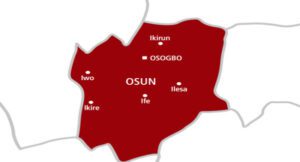
The uniqueness and revival of Adire fabric in the space of Yoruba cultural heritage
By Yekeen Olawale Wakeel
Culture refers to the characteristics and knowledge of a particular group of people, encompassing language, religion, cuisine, social habits, music and arts. It plays an important role in the lives of individuals and the society as a whole. Besides, it helps to accumulate, control and organise the human experience and it is basically what makes a person human.
In Nigeria, cultural values differ from state to state, hence, culture is multi-ethnic in nature, just as her people. The people of Nigeria love their traditional languages, music, dance and literature. The country comprises three large ethnic groups, Yoruba, Hausa-Fulani and Igbo amongst other ethnic groups.
Thus, culture in Nigeria is most positively multi-ethnic which gives a lot of value to different types of arts such as: ivory carving, grass weaving, wood carving, leather and calabash. Others include Pottery, painting, cloth weaving, glass and metal works. In the words of Rachel Zoe, an American Fashion Designer, “Style is a way to say who you are without having to speak”.
Nigerian clothing is unique and attractive. It includes lace, jacquard, adire, ankara and so on. Nigerian clothing for women, include buba, kaba, iro, gele and iborun or ipele. And clothing for men include buba, fila, sokoto, abeti-aja and agbada. Other than traditional attire, the people also wear Western apparels as well.
Abeokuta, the Ogun State capital, is probably unique in the production of “adire”. According to Oxford Advanced Learner Dictionary, defined adire as the indigo-dyed cloth made in South-West Nigeria by Yoruba women, using a variety of resist-dyeing techniques.
The earliest pieces of this type were probably simple tied designs on cotton cloth hand-spun and woven locally. However, in the early decades of the 20th century, new access to large quantities of imported shirt material via the spread of European textile merchants in Yoruba towns caused a boom in these women’s entrepreneurial and artistic efforts, making adire a major local craft in Abeokuta and Ibadan, attracting buyers from all over West Africa.
Although Abeokuta is seen as the capital of adire-making in Nigeria. Adire dyeing began in Abeokuta when Egba women from Ibadan returned with the innovation. The cloth’s basic shape became that of two pieces of shirting material stitched together to create a women’s wrapper cloth.
New techniques of dyeing thereafter developed. The tradition of indigo dyeing dated back to centuries in West Africa. The earliest known example is a cap from the Dogon kingdom in Mali dating to the 11th century, dyed in the “oniko” style.
However, by the end of the 1930s the spread of synthetic indigo and caustic soda and an influx of new less skilled entrants caused quality problems and a still-present collapse in demand. Though the more complex and beautiful starch resistant designs continued to be produced until the early 1970s, and despite a revival prompted largely by the interest of US Peace Corps workers in the 1960s, never regained their earlier popularity.
In the present day, simplified stenciled designs and some better quality oniko and alabere designs are still produced, but local taste favours “kampala” is also known as adire by a few people.
Adorning ‘adire’ fabrics, as ways of dressing, has helped in promoting the art and culture especially when people travel abroad, it not only showcases the rich cultural values of adire both within and outside Nigeria.
It brings out the aesthetic values wherever they are showcased. More importantly, adire also serves as a significant connection between present-day and old-time forms of dressing. This is evident through the type of events in which Adire fabrics or prints can be worn.
No doubt, there is an emerging market for this wearable work of Art called adire as it is fast gaining both local and international attention. The fabric had no space in the market as people no longer wore it until recent efforts were made to revive it. However, the fabric faced challenges from the youths because they did not understand the significance of Adire attire.
The cultural clothes have in the recent past been extinct but with the intervention of the Yoruba elders, the attire is regaining its pride in cultural space. Many have forgotten the ancient way of dressing instead imbibing foreign attire especially among the younger ones. Though, there is advocacy on the need to revive the Adire attire as in the past.
Governments at all levels in Yorubaland have adopted policy on the wearing of Adire as an official apparel for especially public servants. The government of Osun, Ogun, Oyo among other states have adopted the wearing of Adire for civil servants on a specific day. This effort will further revive the dying adire fabric.
Therefore, the government and general public should make spirited efforts and formulate a policy that will make the wearing of Adire fabric among the people, especially Yoruba compulsory in public places.
Yekeen Olawale Wakeel, Chief Museum Education Officer, National Museum, Ile-Ife.



